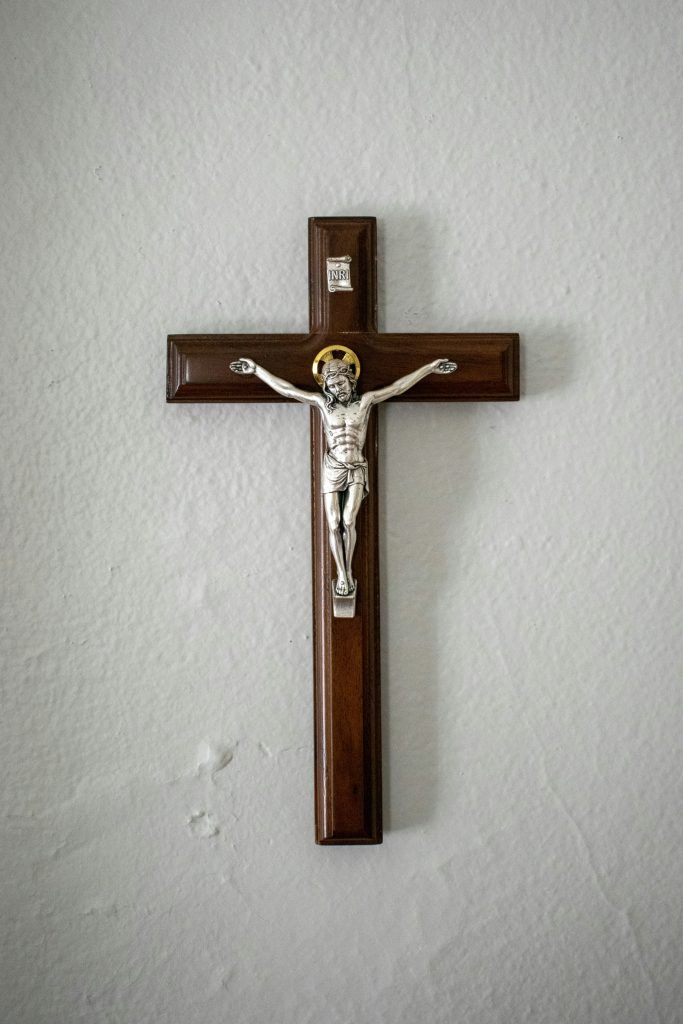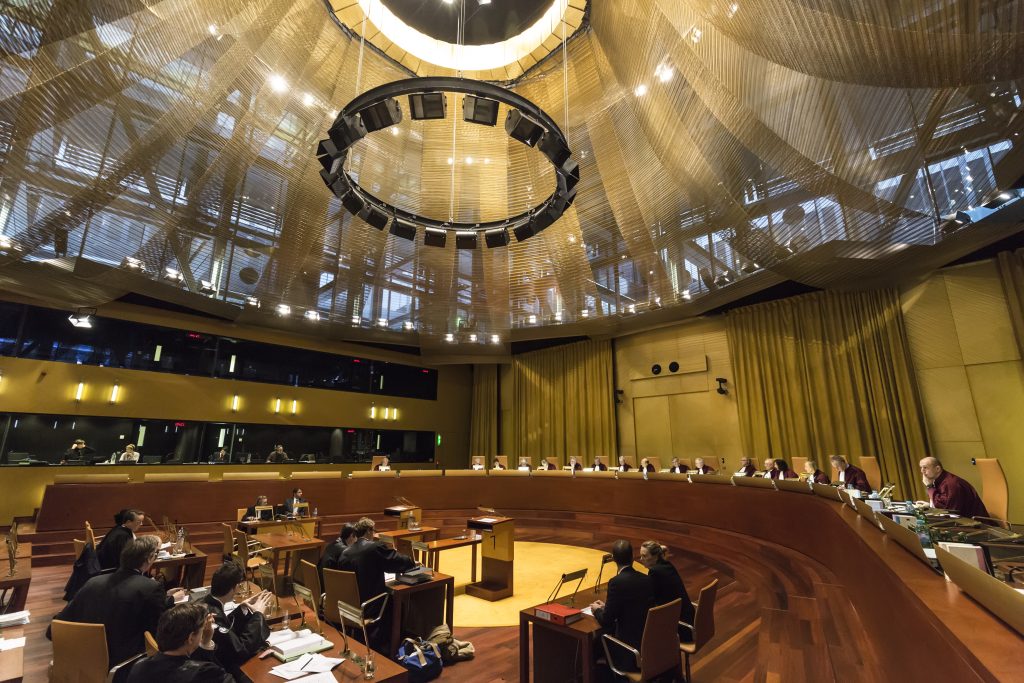
Matteo Corsalini is postdoctoral researcher at the University of Siena, Department of Social, Political and Cognitive Sciences.
Concepts of Neutrality in European Law
In liberal Western democracies, one possible reading of the principle of “neutrality” vis-à-vis religions is that states should encourage the flourishing of all co-existing faith- and belief-based systems that inhabit the public sphere. While this paradigm embodies an “ideal type of inclusive secularism,”[1] managing religious diversity under an egalitarian conception of neutrality does not mean that civic authorities must treat all groups seeking a place and a voice within the state with absolute impartiality.
In actuality, “impartiality” toward citizens from all walks of life and religious (or non-religious) backgrounds can have different meanings for different people, thus making the objective of neutrality abstract and contentious, if not downright impossible to achieve.[2] How could states and their representatives possibly avoid bias (and thus partiality) when they themselves have inherent, and sometimes unconscious, preconceptions woven into the very fabric of their social, political, and cultural identities?
In this view, it is suggested that key to a genuinely neutral approach vis-à-vis religions is that states, despite their ideological leanings, commit to refraining from conferring superior status to the groups that align best with their inclinations when exercising governmental powers.[3] Only this shift in perspective could help transform neutrality from a theoretical and abstract concept into a practical and methodological tool to ensure that political and legal reasoning around freedom of religion or belief (FoRB) is truly open to diversity.
This alternative understanding of neutrality vis-à-vis religions stands squarely in the light of some European contemporary discussions on the topic that recently have been collected in a timely special issue of the Oxford Journal of Law and Religion. Overall, the featured articles indicate that, despite academic expectations that public authorities apply less abstraction to neutrality (and, relatedly, FoRB issues), current state-of-the-art debates are nevertheless still confined to a weak theoretical and conceptual level of discussion. The end result, in the words of Stijn Smet, is that the principle of state neutrality remains a “contested and illusive” category in the field of European law and religion.
For proof, it suffices to look at the regional level of the Council of Europe (CoE),[4] where debates over neutrality are still predominantly tied to a lack of unanimous consensus among the 46 CoE member states about the very meaning behind this concept. Emphasis on this definitional puzzle, in turn, has conventionally produced negative trickle-down effects at the CoE’s judicial, decision-making level that are particularly evident in matters of religious freedom.
In this area, the main CoE tribunal—the European Court of Human Rights (ECtHR)—is in fact famously known for routinely deferring the interpretation of the meaning and scope of neutrality to CoE states. Inevitably, this is mostly due to conceptual confusion behind this term. As a result, the ECtHR has crafted over time a “hands-off”[5] approach (see the 1993 Kokkinakis v. Greece case) that makes ample concessions to states’ own understanding of neutrality based on their specific cultural backgrounds, thus producing case law on FoRB that is schizophrenic to say the least.
Contrasting the ECtHR’s judgment in Dahlab v. Switzerland (2001) with its Grand Chamber decision in Lautsi v. Italy (2011), for instance, offers an apposite illustration of the ECtHR’s tendency to entangle itself in contradictory narratives of European neutrality.

In Dahlab, the Court dismissed a public-school teacher’s wish to wear an Islamic scarf in class, accepting the Swiss government’s argument that a ban was needed to ensure the public education system’s across-the-board compliance with a strict principle of “denominational neutrality.”[6] However, in Lautsi v. Italy the same concept of neutrality was applied in a fashion diametrically opposed to Dahlab, when the ECtHR upheld the display of a Christian crucifix in an Italian municipal school. In so doing, the Court sided with the government’s repeated assertion that a Christian cross was simply a cultural “passive symbol” that for centuries had been neutrally present in most Italian public institutions without imposing ideological indoctrination on citizens.
In sum, this brief glimpse into ECtHR case law underscores how anchoring the discussion on neutrality primarily at a conceptual level of analysis de facto encourages supranational judges to confer ample margins of discretion to states actors when determining the meaning of this concept. And depending on the meaning and functions chosen and assigned to neutrality at the domestic level (e.g., “denominational neutrality” per Dahlab or “passive neutrality” per Lautsi), states, in turn, have a chance to substantially impact the trajectory of ECtHR case law at the supranational level.
Following the path of this vicious circle of ECtHR neutrality, a similar logic has recently unfolded in the sphere of another a CoE sister organization—the European Union (EU). This time, however, as Stijn Smet explains, it is not states but private business actors that have been left with the task of clarifying what neutrality means at this level. How this “privatization”[7] of neutrality developed through the case law of the Court of Justice of the European Union (CJEU) is briefly summarized below.
European Union Court of Justice’s Private Neutrality
From 2017 to 2022, several French and Belgian disputes regarding prohibitions on wearing the Islamic headscarf at work have provided the CJEU with a platform to inaugurate and test a new “cycle” of neutrality, shaping a unique bottom-up and private understanding of this concept.
This experiment has been conducted through the analysis of five cases where the wearing of the hijab by some applicant–Muslim employees clashed with the desire of private employers to introduce policies of “corporate neutrality” within their companies. Deemed necessary to maximize customer engagement and profits, rules of corporate neutrality thus prohibited the display of any political, philosophical, and religious visible signs at work that could be at odds with the secular, business image that employers wished to convey to the public.
In this context, the CJEU clarified in Bougnaoui v. Micropole (2017) that a policy of corporate neutrality did not amount to direct discrimination under EU anti-discrimination law (i.e., Directive 2000/78/EC) since, in principle, it did not explicitly (and exclusively) target Muslim employees.[8] Further, continued the Court, a generally applicable, neutral rule treating all visible signs of belief without distinction will not constitute indirect discrimination “if it is objectively justified by a legitimate aim . . . and if the means of achieving that aim are appropriate and necessary” (emphasis added).

In the sister-judgment Achbita v. G4S Solutions (2017), the CJEU went further to give national courts guidance on how to appraise whether an internal rule of neutrality satisfied the three criteria of legitimacy, appropriateness, and necessity.
As to the first requirement, the CJEU clarified that an internal rule of corporate neutrality is a legitimate aim to foster freedom to conduct a business, according to Article 16 of the Charter of Fundamental Rights of the European Union (Achbita, paras 37–38). In so doing, the Court seemed, for the first time ever, to directly associate the meaning and scope of neutrality with the self-interested objectives and interpretations of private, profit-oriented actors. The end result is that neutrality, theoretically conceived as a public principle to foster freedom of religion for all, has been transforming at the EU level into a private concept more closely associated with a company’s desire to be entirely free from religion as part of its business plans.
This becomes even clearer when considering how the CJEU muffled any consideration of the applicant-employee’s rights to freedom of religion, thus de facto cancelling out the “FoRB side” of the dispute at hand from its analysis. The Court struck, in fact, a “one-sided”[9] balancing approach where proportionality was applied only in relation to the defendant-company. Thus, the overall balancing exercise was weighted exclusively on evaluation of the two remaining criteria to justify indirect discrimination: the appropriateness and necessity of an internal rule of neutrality.
In its analysis, the CJEU clarified that a policy of neutrality would be appropriate and necessary only insofar as, first, the rule is “pursued in a consistent and systematic manner,” thus applying equally to employees regardless of their ideological affiliation. Second, and relatedly, the policy must be “undifferentiated,” meaning that the ban must apply to all visible signs in the workplace and not just to some symbols of religious, philosophical, and political affiliation. Third, and lastly, the rule must be “limited to what is strictly necessary” and thus apply only to customer-facing employees (Achbita, paras 40–42).
The aforementioned principles have been cumulatively repeated in a pair of subsequent joined sister-cases with outcomes nearly identical to that of Achbita: IX v. WABE eV and MH Müller Handels GmbH v. MJ (2021). Notwithstanding the similarities, these two judgments introduced three significant additions to the guidelines set in Achbita that merit attention.
First, there is now an extra requirement for employers to demonstrate the existence of a “genuine need” for introducing a policy of neutrality—which may even include the sudden fear of impending “social conflicts” between diverse groups among the workforce. This addition appears to establish an onerous burden of proof that would seemingly make it more challenging for businesses to justify neutrality in the workplace.
A closer examination, however, reveals that employers could apparently circumvent this burdensome extra layer of evidence by satisfying a second criterion. The Court clarified that corporate neutrality could also be justified based on evidence that such a policy is necessary to meet the expectations and “legitimate wishes” of customers and, thus, that a commercial business would suffer substantial economic harm without such a policy in force. In summary, due to this second criterion, the WABE and Müller judgments seemingly de facto conferred on neutrality policies a presumption of legitimacy even stronger than that established in Achbita.
Even so, in a possible attempt to counterbalance the robust pro-business stance of WABE and Müller, the CJEU provided a third and conclusive principle for state courts to follow. In a marked improvement over Achbita, the Court ultimately clarified that “national provisions protecting freedom of thought, belief and religion . . . may be taken into account as provisions more favourable to the protection of the principle of equal treatment” than Directive 2000/78/EC (see WABE and Müller, para. 80).

Pointing at domestic legislation as a possible “escape-hatch” for faith-based employees, with this final remark, the CJEU thus appeared to signal, in the words of Andrea Pin, an overall “change of strategy in religious freedom litigation”; indeed, the Court’s wording appears to invite religious believers “to make more arguments based on state legislation rather than on EU anti-discrimination law” in their employment complaints.
In its subsequent 2022 judgment LF v. SCRL, however, the CJEU built on precedent, adding that state provisions distinguishing between “religion” and “belief” as two separate grounds of discrimination do not qualify as “more favourable legislation” for employees. If framed like this, the Court explained, the threshold of protection provided by national legislation would be lower than the standards set by Directive 2000/78EC. The Court opined that this piece of EU legislation aims to place religious and non-religious people on equal footing, as the wording “religion or belief” within the Directive generally covers any kind of denominational, spiritual, and philosophical (but not political) conviction (LF v. SCRL, paras 44–45). Apart from this, LF v. SCRL did not offer any other particular refinement to the overall developments of the Achbita saga. Nor did the CJEU balance corporate neutrality with FoRB; rather, it prioritized, once again, a business’s own self-perception and understanding of what it means to be neutral over proportionality.
CJEU Neutrality Goes Public
Following the latest installment in the Achbita line of cases, OP v. Commune d’Ans, corporate neutrality is now going public. In a judgment rendered on 28 November 2023, the CJEU cumulatively transposed and applied most of its key takeaways on FoRB employment disputes to the public sector, thereby steering the trajectory of EU-level neutrality in a new direction (from the private to the public workplace).
In OP, the CJEU was called on to decide, for the first time ever, whether a Belgian municipality could enforce a policy of “exclusive neutrality” that mostly affected Muslim female employees, by prohibiting the wearing of the hijab in the workplace. More precisely, the dispute originated from the complaints of Ms. OP who, since 2016, held a back-office position at Commune d’Ans and, starting in 2021, was forbidden from wearing the Islamic scarf, despite not facing dismissal.
In its analysis, the Court noted how it was already settled case law that an internal policy of neutrality forbidding all visible signs of belief without distinction might prima facie constitute a legitimate aim. The most significant difference from the prior five cases is that the Court recognized the legitimacy of corporate neutrality in relation to a public institution’s objective to “put into effect the principle of neutrality in public service” (paras 29–30, 32). Other things being equal, there was no need for the Court to assess whether neutrality could be reconciled with the freedom to conduct a business, as it did in its previous judgments, given that the defendant lacked a private, for-profit nature.
The CJEU, however, did not seem to draw any distinction between commercial enterprises and public institutions, as it extended to the defendant-municipality broad (and business-like) organizational powers to maintain an entirely neutral administrative environment. The Court also clarified that a public objective of exclusive neutrality stretches as far as to prohibit all employees from wearing ideological garments at work, and not just customer-facing ones, as specified in its previous judgments.
Because a completely aseptic and neutral workplace design requires that “no visible manifestation of beliefs” (Commune d’Ans, para. 39) be allowed, the Court thus deemed the internal rule under examination necessary and appropriate at face value. In so doing, it gave no consideration to the competing religious interests of the applicant-employee, which the Court swiftly expunged from its analysis.
Conclusion
Building on precedent, the European “cycle” of neutrality reveals the continuous movement of a highly versatile and multifaceted concept. At the EU level, in particular, corporate neutrality now appears to be flowing from the public to the private sector and vice versa, gathering from each environment elements that constantly shape its meaning and functions.
In Achbita and subsequent case law, the CJEU seemed to rework the public principle of state neutrality, extending a prohibition on public officeholders from displaying symbols of religious/ideological affiliation to encompass a duty of religious discretion for private employees.[10] And to come full circle, these new private duties of neutrality have now been extended for the first time to all employees working in public sector workplaces, including staff with no customer-facing roles, in OP v Commune d’Ans.
Nevertheless, a conclusive and final question has been left unanswered, even in this most recent judgment: namely, could the new-found and pervasive powers of public employers to forbid religious clothing for all staff, whether interacting with customers or not, increase challenges for hijab-wearing women to access the labor market, on the basis of both religion and gender?
While increased challenges were recognized by Advocate General (AD) Medina, who raised this intersectional discrimination issue in his opinion in LF v. SCRL, the CJEU still appears in doubt. The Court opined in OP, “As regards the existence of possible indirect discrimination on the grounds of sex,” the referring party did not provide sufficient “information enabling ascertainment of the factual situation” (para. 49) on which this question is based. Thus, in the Court’s view, at this stage, more elements seem to be required to fully address the issue of gender and religious intersectionality vis-à-vis EU corporate neutrality.
References:
[1] This formula can be traced back to Myriam Hunter-Henin, Why Religious Freedom Matters for Democracy: Comparative Reflections from Britain and France for a Democratic “Vivre Ensemble” 43 (Hart 2020).
[2] For similar considerations, see Steven D. Smith, The Illusion of Religious Neutrality, L. & Liberty (3 Apr. 2012).
[3] In this sense, see Malcolm Evans, State Neutrality and Religion in Europe: What’s the Prospect?, 11(1) Oxford J. L. & Religion (2022). Evans argues, “States can (as they do) have preferences. But the manner in which those preferences are expressed in law and in practice must not trench upon the ability of others to follow their own religions or beliefs in accordance with their constitutional and convention rights.”
[4] Established in 1949, the Council of Europe (CoE) is a regional organization focused on developing legal and judicial minimum standards for human rights, democracy, and the rule of law in Europe. It is important not to confuse the CoE with the European Union (EU), as the latter generally draws on CoE principles to drive progress in distinct areas that are mostly concerned with matters of political and economic integration in Europe.
[5] The ECtHR inaugurated this approach in its first and foundational 1993 decision on religious freedom, Kokkinakis v. Greece, App. No. 14307/88 (ECtHR 25 May 1993).
[6] This formula could be traced back to Dahlab v. Switzerland, App. No. 42393/98 (ECtHR 15 Feb. 2001).
[7] This formula can be traced back to Léopold Vanbellingen’s 4 Conditions Européennes Pour Une Neutralité Exclusive, Observatoire Juridique du Fait Religieux en Belgique (5 Dec. 2023) (arguing that “[t]he increasing invocation of neutrality by private employers seemed until recently to mark a movement of ‘privatisation’ of state neutrality towards the company [at the CJEU level]” (translation by the author)).
[8] See Bougnaoui v. Micropole, paragraph 32, where the CJEU found that the termination of a hijab-wearing employee in the case at hand was directly discriminatory, while reasoning, a contrario, that no prima facie direct discrimination would have occurred if the dismissal were based on an “apparently neutral rule” established within the company.
[9] This formula could be traced back to Russel Sandberg, The Future of Religious Freedom, in When Human Rights Clash at the European Court of Human Rights. Conflict or Harmony? 130, 136 (Stijn Smet & Eva Brems eds., Oxford Univ. Press 2017).
[10] In this sense, see also Marco Ventura, Nelle Mani di Dio. La Super-Religione del Mondo che Verrà 215 n.23 (Il Mulino 2021) (using the dichotomy “old/new secularism” to describe the regression of conventional state neutrality into a check on public expressions of religiosity in the private sector at the EU level).
